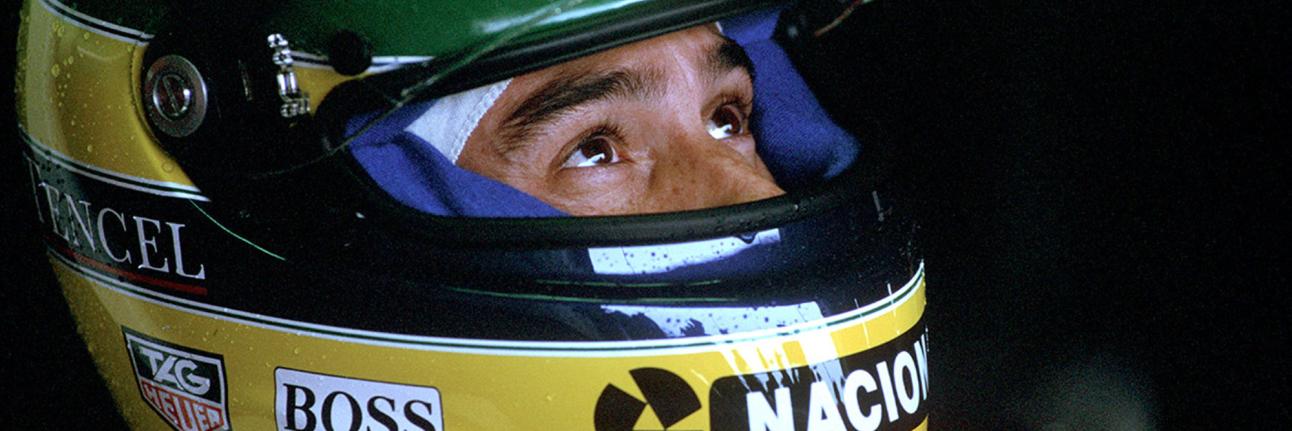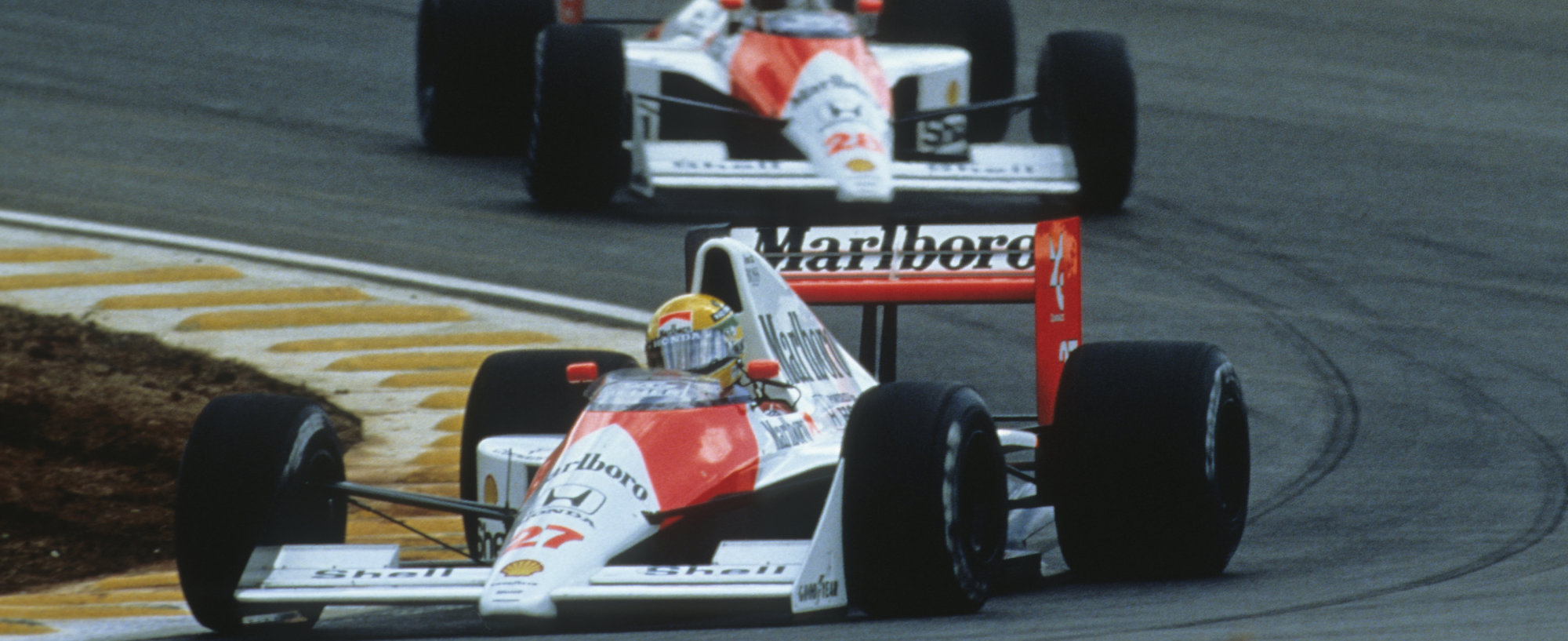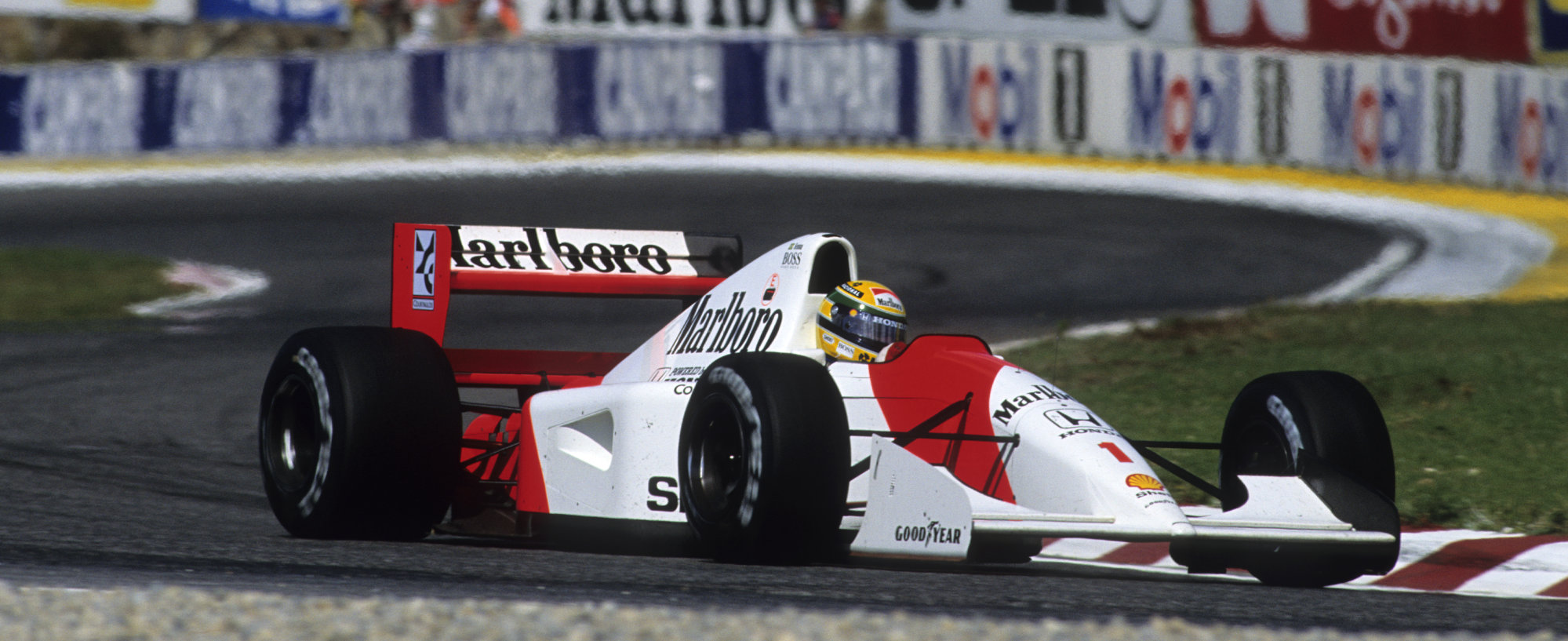
Ayrton Senna: Remembering a racing legend 30 years on
01 May 2024Today marks the 30-year anniversary of the tragic death of one of F1’s all-time greats. Ayrton Senna was 34 years old and just three races into his campaign with team Williams when his FW16 inexplicably came off the track at the Tamburello corner during the 1994 San Marino Grand Prix in Imola, hitting a concrete barrier and killing the Brazilian driver instantly. Senna’s death rattled the world, and in his home country, the death of a national hero would lead to days of mourning as a figure who personified pride land patriotism in the country.
Who was Ayrton Senna?
Ayrton Senna was born 21 March 1960 in Sāo Paulo, Brazil, and was from a young age fascinated by racing. He first competed competitively in karts when he was just 13, before moving to the UK to compete in Formula Ford 1600 and 2000. It was clear immediately that the driver had a gift, and in 1983 he moved to Formula 3 racing where the young Brazilian won the British championship in his first year.
The next jump saw Senna join with small team Toleman in 1984 for his first Formula 1 campaign, where he raced for a year before moving on to Lotus, McLaren, and finally, Williams in 1994.
Characterised by his wet weather driving talent, aggressive race craft, and heated rivalries on track, off-track Senna was an advocate for social change, national pride, and support for fellow drivers and safety. With regular run-ins with the FIA and Formula 1 management, the driver was an outspoken figure who quickly became one of the sport’s most legendary personalities.
Back at home in Brazil, he became a source of unity for the nation. With severe economic and social struggles in the country during this period, seeing the local hero Ayrton Senna winning race after race united people in celebration of a man who was successful and proud to be Brazilian on the world stage.

Senna's Formula 1 career
Ayrton Senna’s Formula 1 career was one of impressive performance, heated rivalries, on-track controversy, and aggressive but immensely successful driving style.
Here are some quick stats from his ten-year career:
• 162 Grand Prix entries
• 41 wins
• 65 pole positions
• 80 podiums
• 3 world championships
Starting with Toleman in 1984, Senna’s first year in Formula 1 saw him take an impressive second place during only his sixth Grand Prix, all while in a car down on performance. Thanks to an incredible wet weather drive during the Monaco Grand Prix, he started the race in 13th before working his way through the field as the downpour continued to reach second by the time the race was red flagged and called off. Straight away it was clear that, given the right car, this driver would become a future world champion.
A rivalry with McLaren teammate Alain Prost peaked in 1989, where on lap 47 of the Japanese Grand Prix and with the two cars leading, Prost and Senna came together as Senna attempted to overtake on the inside. Prost quickly closed the door, making contact with Senna and seemingly taking both cars out of the race. However, with a push from the marshals, Senna was able to get going again, and eventually won the race on the road. To his and the team’s disappointment he was ultimately disqualified from the race for failing to drive through a chicane when re-joining the track.
When McLaren attempted to overturn the decision, other ‘indiscretions’ were brought up as evidence, which resulted in a $100,000 fine and six-month suspension for the Brazilian driver. Senna spoke of wanting to quit the sport after this experience, and his relationship with the FIA was left severely damaged to the point where his super licence was almost not renewed for 1990.
One of Senna’s most impressive shows of skill came during his home race at the Brazilian Grand Prix in 1991. With just seven laps to go, a gear box failing beneath him, he had no option but to finish the race with just sixth gear. Through sheer determination and skill, he finished the race in first, but the physical exhaustion from driving with just one gear led to him collapsing on the podium. A show of how far Senna pushed himself on his mission to win.
Arguably one of the most impressive opening laps in the history of the sport, the 1993 European Grand Prix at Donington Park saw Ayrton Senna drop to sixth at the race start, but thanks to his unmatched wet weather driving talent, he was soon able to breeze past the other drivers to take first place by the end of lap one. A scarcely believable drive that’s still remembered to this day.
Legacy
Following his death on 01 May 1994, Ayrton Senna was transported home for a state funeral, and his passing declared a national tragedy. The legacy left by the driver in his home country was perhaps more than any before or since. The way he unified Brazil through his proud patriotism made him a national icon whose story and mission is still remembered fondly by all he touched.
The shockwaves caused by the death of such an iconic figure in the sport marked a major shift in racing and Formula 1 as cars and circuits were made safer, slower, and the Grand Prix Drivers’ Association was reformed to better protect and represent drivers. These safety improvements meant that Formula 1 wouldn’t see another driver death from a Grand Prix for some 20 years after the 1994 San Marino Grand Prix.
In November 1994, Senna’s family founded the Ayrton Senna Institute, an NGO with the purpose to provide better opportunities for young Brazilians, an issue the driver was very passionate about. Since its founding, the organisation has invested over $80 million in social programmes across Brazil, keeping his legacy going.
Remembering the icon 30 years on
READ MORE: SILVERSTONE FESTIVAL TO HONOUR AYRTON SENNA
This summer’s Silverstone Festival (23-25 August) will honour the legacy of this iconic driver. In Ayrton Senna’s record-breaking career, he scored more race wins at Silverstone than any other circuit. While he only claimed victory at the British Grand Prix once in 1988 with McLaren, throughout his total racing career he racked up more victories at Silverstone than anywhere else in the world.
To pay tribute to the racing legend, Silverstone Festival will be showcasing cars from across Senna’s incredible career ranging from his roots in karting through to his career in F1.
Don’t miss the opportunity to catch a snapshot of Senna’s racing career at Silverstone Festival this August Bank Holiday. Secure your tickets here.
Header image credit: ©NORIO KOIKE, ASE.









